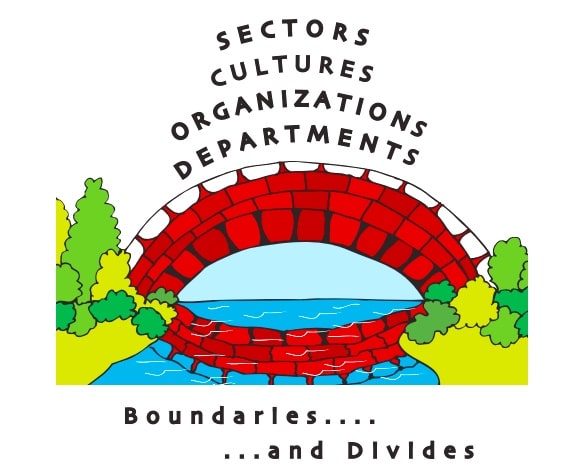Types and Degrees of Collaboration
From Piggy-Backing to Partnership
There are as many types and degrees of collaboration as there are people, organizations, and sectors. The fullest expression or form of a collaborative relationship is a PARTNERSHIP.
In a partnership, the relationship itself is as important as, if not more important than the goals or outcomes being jointly pursued. A big part of what motivates collaborative partnership projects are the benefits and enjoyment gained from building relationships and entering into that kind of exchange.
Collaboration can take place within, between, or across:

All are potential collaborators!

This ecosystem is not exhaustive or complete, but it starts to illustrate segments and layers. You can do sub-grouping in each area, sector or population.
Examples of potential combinations of collaborations:
- Individual or small informal emerging groups and organizations can partner with large established organizations to their benefit.

- Two (or more) small emerging organizations can partner.

- Two (or more) mid-size or large established organizations can partner together.

Or any other advantageous combination identified.

“In physics, leverage is defined as the mechanical advantage gained from using a lever. In business, it means using a proportionately small investment to gain a high return.”
To paraphrase Archimedes, ‘Give me a lever long enough and I alone can move the world.’
“High impact non-profits use the power of leverage to create change.”
